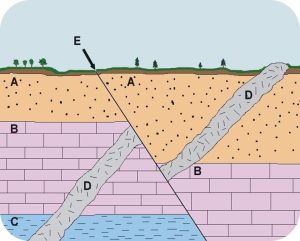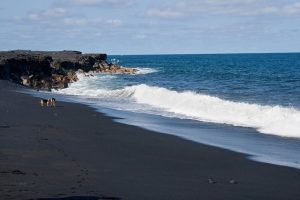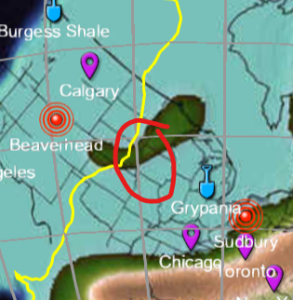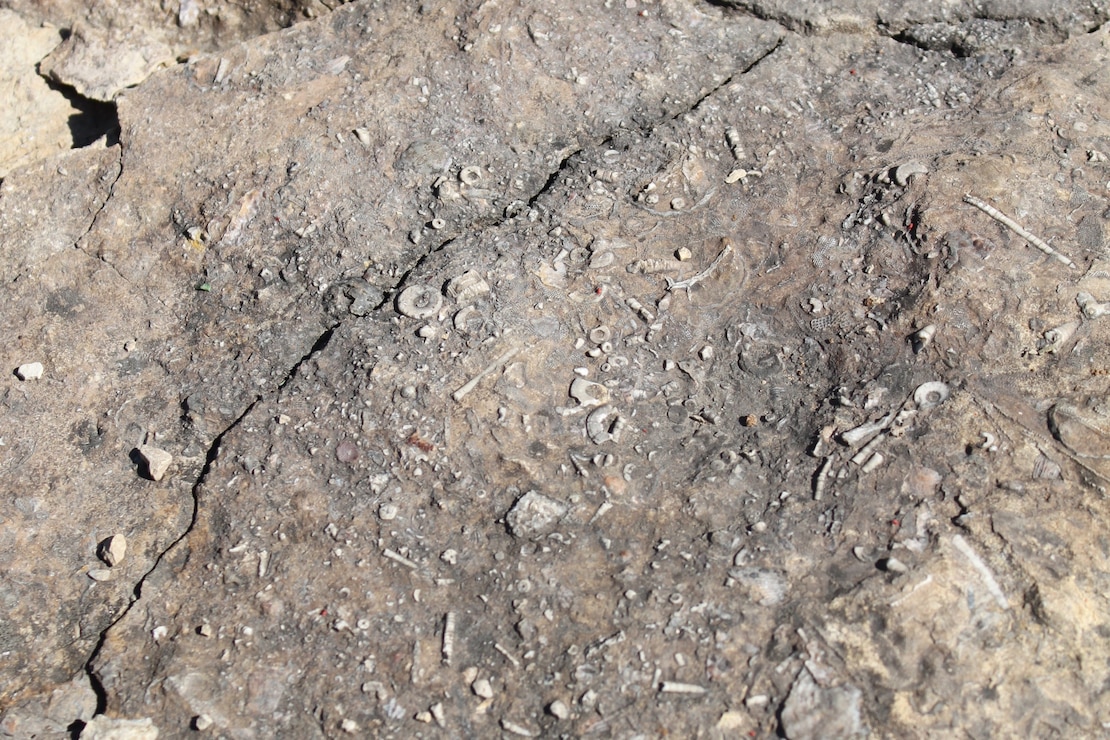1 Week 8: Geology that kids see
Dr. Ted Neal and Alexis Hatvick
Law of Superposition
The Law of Superposition states that deeper layers of rock are older; deeper layers of rock were formed before layers that are closer to the surface. The Law of Original Horizontality states that successive layers of rock are formed in flat, horizontal layers; this is because gravity pulls down on the rock when it forms. Using these laws, geologists and archaeologists can determine the relative age the layers of rocks.
Sometimes, however, layers of rock do not match up horizontally. Due to the movement of Earth’s plates, the layers constantly shift and may become skewed or tilted. Additionally, surface level factors such as erosion and weathering can affect the top layer of earth by washing parts of it away. Finally, intrusions of magma (which forms igneous rock) can disrupt the horizontal layers beneath the surface. All of these factors provide clues for scientists to understand what occurred and when it happened at different times on Earth.
 “Laws of Superposition and Original Horizontality” by CK-12 is licensed under CC BY-NC 3.0
“Laws of Superposition and Original Horizontality” by CK-12 is licensed under CC BY-NC 3.0
In the image, above, the layers of rock oldest to youngest are C, B, A, D.
- C is the oldest because it is the deepest layer.
- Next, B was formed on top of C.
- Then, A was formed on top of B.
- D is an intrusion of magma. We can tell it happened after A, B, and C were formed because it intrudes (cuts through) through all three layers and reaches the surface of Earth.
- Finally, a shift occurred in the layers due to plate tectonics, represented by the line, E. We can tell this happened last because every layer of rock and the intrusion have been disrupted and they are skewed horizontally.
K-6 Standards
4-ESS1-1. Identify evidence from patterns in rock formations and fossils in rock layers to
support an explanation for changes in a landscape over time.
To learn more about the Law of Superposition, the following video is highly-recommended viewing:
Video credit: Law of Superposition by Bozeman Science is licensed under CC BY 3.0
Sand
Sand is any rocky material that is bigger in size than silt and smaller than gravel. Sand is created when rocks are weathered, or broken down, in one of two ways: by water or by wind. When wind or water continually passes over a rock, it breaks it down into smaller and smaller pieces and sand is formed. Sand that was formed from weathering by wind tends to be pitted and frosted in appearance because other grains of sand have constantly been pelted against the rock. Sand that was formed from weathering by water tends to be smooth and polished because the water has continually passed over the rock.
Where did this sand come from?
| Type of Sand | Location | Characteristics |
| Weathering by wind | Dunes in the desert | Scratched or frosted, pitted, uniform in size |
| Weathering by water | Rocks near water | Rounded, polished, smooth |
Like fossils, sand can also tell a story. Based on where it is found in the world, sand is composed of different materials. Thus, it can also come in a variety of colors such as black, white, green, red and pink. Black sand, for example, is made from lava that has cooled to form an igneous rock; one place it can be found is near volcanoes in Hawaii.

Devonian Fossils
We’ve discussed fossils previously, but what about what lies in your very backyard?
A fascinating place lies just beyond Iowa City – the Devonian Fossil Gorge. Revealed initially by high floodwaters in 1993 from Coralville Lake, then more so in 2008, this gorge contains fossils over 375 million years old! Iowa used to be an ancient ocean floor and hosted countless creatures such as trilobites, brachiopods, and even early fish species. These fossils can be studied and analyzed by the general public, including UI students! Check out this Virtual Tour by the UI Paleontology Repository for some extra information about the area!
So, when was the Devonian? Remember Week 6 when we used EarthViewer? Looking back we can see where Iowa was relative to where we are now:

Circled in red is how Iowa was back then, approximately 375-370 millions of years ago (near South America’s coastline). At the end of the Devonian Period land vertebrates had just begun to exist after a massive extinction event. We may be in the Midwest, but fossils and evidence of Earth’s history lies just outside the door; explore!
Weathering, Erosion, and Deposition
Weathering is the breakdown of rocks on Earth’s surface. There are two types of weathering:
- Mechanical: also known as physical weathering, rock is broken down into smaller fragments due to water, wind, or other conditions such as temperature and pressure changes
- Chemical: chemical reactions change the molecular structure of the rock
After the rocks are broken down through weathering, erosion can occur. Erosion is the process by which the small bits of rock are transported to a new location. Finally, deposition occurs when the particles are added to or deposited at a new location. These three processes act as a cycle, continually breaking down and building up different parts of Earth’s landscape.
Key Takeaway
Weathering is the making the mess and Erosion is cleaning it up.
K-6 Standards
2-ESS2-1. Compare multiple solutions designed to slow or prevent wind or water from changing
the shape of the land.
4-ESS2-1. Make observations and/or measurements to provide evidence of the effects of
weathering or the rate of erosion by water, ice, wind, or vegetation.
Fossils
Fossils are the remains of plants or animals that have been preserved in rock. Fossils form when the remains of a plant or animal are quickly buried after they die. Over time, the remains are replaced by minerals and compacted between layers of sediment to form fossils in sedimentary rock. Fossils are very fragile so they can only be found in sedimentary rocks; the extreme heat and pressure needed to form igneous and metamorphic rocks would destroy the fossil.
Fossils can also tell a story. Using the Laws of Superposition and Original Horizontality, geologists can figure out the relative age of a certain layer of rock. Sometimes, a specific type of fossil is found widely throughout one of these horizontal layers. Scientists can infer, then, that the organism lived during the same geologic time; this is called an index fossil. If the same type of fossil is found in other areas of rock, scientists can figure out that certain layers of rock were formed at the same time as well. In this way, fossils are a record of geologic time that tell a story to the people who find them.

Deeper layers of rocks are older than layers closer to the surface.
Due to the pull of gravity, new rock is initially formed in flat, horizontal layers.
Molten rock beneath Earth's surface.
The breakdown of rocks on Earth's surface

